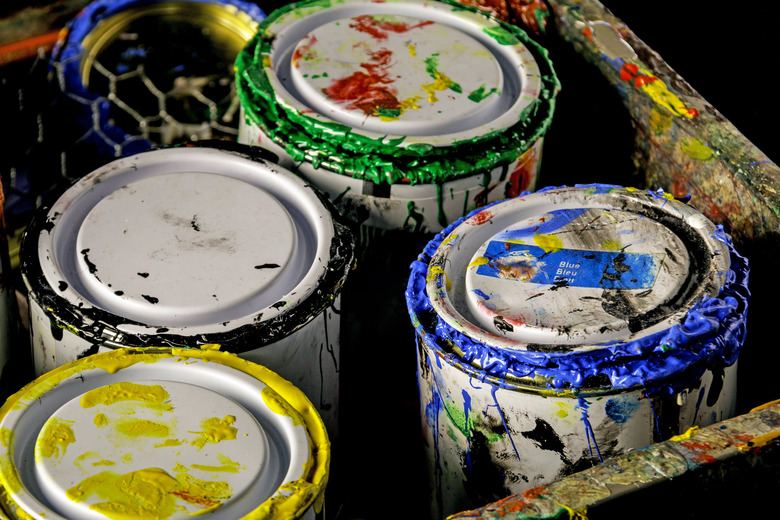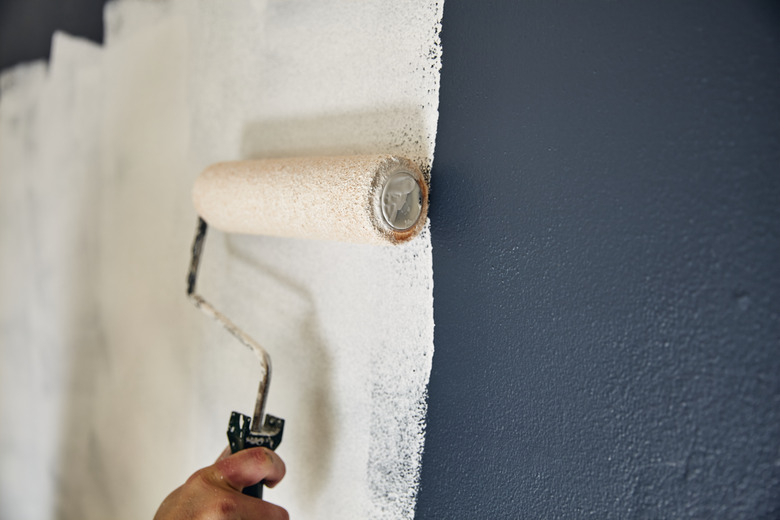How Dangerous Is Lead Paint? Here's What Every Homeowner Needs To Know
If you live in an older home, lead poisoning is a potential environmental health concern, especially if you have flaking or peeling paint in your home. While not generally a problem if it's in good condition, lead paint can cause health and developmental issues for young kids, so you might choose to remove it from your home. Performing a lead paint test and assessing the situation helps you decide what to do and gives you proper peace of mind.
Tip
Lead paint can cause serious physical and neurological issues for people of all ages, but kids under age 6 are most susceptible to lead poisoning. Deteriorating lead paint can cause developmental delays, learning disabilities, seizures and many other problems.
Homes With Lead Paint Risks
Older homes built before 1978 often have lead paint in them because before regulations banning it, lead pigment was added to interior and exterior paint to make it more durable. The hazards of lead came to light in the mid-1900s, and it was officially banned in 1978, although some states banned it earlier.
Most homes have been repainted since 1978, but the lead paint often remains buried under layers of new paint. It's often an issue on door and window trim or banisters, where frequent use can lead to paint rubbing off and exposing the lead paint. If you repaint old siding on a home, you might also find lead paint underneath when you remove the layers of old paint.
While lead-painted surfaces are common sources of lead hazards, there are other areas of concern in the home. Other potential sources of lead exposure include soil, household dust contaminated with lead, some pottery, toys produced in other countries and drinking water from lead pipes or pipes that were soldered with lead.
Lead Poisoning Risks
The effects of lead poisoning can be devastating — and particularly to the smallest residents of the home. Young children under the age of 6 have the highest risk of health problems after a lead exposure. It's absorbed more easily in children, and they're more likely to chew on painted surfaces or paint chips they find. Lead is more damaging to young kids than it is to older kids and adults because their brains and nervous systems are more sensitive to it are still developing. Lead exposure in pregnant women can cause miscarriage, stillbirth or premature birth. It can also cause a low birth weight and slowed growth of the baby.
High levels of lead can build up in the body over time, leading to physical and mental issues and even death if the blood lead levels get high enough. Children exposed to lead may experience developmental delays, learning difficulties and hearing loss. Other symptoms of lead poisoning include weight loss, fatigue, abdominal pain, constipation, vomiting and seizures.
In adults, lead poisoning can cause high blood pressure, headache, memory issues, mood disorders and reduced sperm count. Lead can cause irreversible damage to brain development as well as kidney and nervous system damage. Even low levels of lead can cause issues for children and adults, so managing lead paint properly is important for the health and safety of your entire family.
Handling Suspected Lead Paint
Although the health risks can make anyone wary, lead paint itself doesn't cause an issue. The risk of lead poisoning happens when the old paint flakes, chips or peels away from the trim or walls. You can also stir up trouble if you disturb lead paint while you're remodeling because sanding or scraping a surface covered in lead paint can send lead dust into the air.
If you suspect your home has lead paint, you can test for lead to find out for sure. Hiring a certified lead inspector or lead risk assessor is the most effective way of finding out. They perform accurate testing and can help you evaluate the situation and determine if it's best to leave the paint alone or remove it.
You can also get a home lead test like LeadCheck from 3M, but it might not be as accurate as professional testing. With an at-home test, you won't get the follow-up information from a certified lead professional to help you decide how to proceed safely.
Covering Lead Paint
If the lead paint is still intact, you don't need to remove it. It's easier to encapsulate it and paint over it. Using an encapsulant paint or primer, such as Fiberlock Child Guard sealant, helps lock in the lead paint. Many of these products can be used as paint with the option to tint them to the color you desire. You can also use it as a primer to encapsulate the lead paint before applying a topcoat of your choice of paint.
Before applying the encapsulant, clean the surface well without knocking any paint loose. Apply a minimum of two coats to encapsulate the lead paint effectively. Read the directions on the encapsulant paint or primer to determine other guidelines for proper use.
When to Remove Lead Paint
If the lead paint is deteriorating, it's best to have it removed. Peeling, flaking or chipping paint on windowsills, banisters and other surfaces poses a risk because kids might put the chips in their mouth. It can also send lead dust into the air. Lead paint on your home's exterior can contaminate the soil if it falls into it.
You might also want to remove old lead paint when you refinish a piece of furniture or wood trim to get a smooth finish or a new look. When refinishing a wood cabinet, remove the paint first to stain it or repaint it. Many homeowners choose to remove all layers of paint from wood when renovating a home.
Lead Paint Removal Options
Though you can remove lead paint from your own home while you're renovating, it can be dangerous due to the dust it creates. The safest way to remove lead paint is to hire a contractor who is certified by the Environmental Protection Agency. These contractors have the correct tools and equipment, and they know how to safely remove the paint.
If you're thinking of removing lead paint yourself, check with the local building department that has jurisdiction in your area. There are likely specific rules and processes for removing lead paint, including how to remove it and how to dispose of the old paint. Not only does following those guidelines ensure compliance but it also helps protect your family from the dangers of lead paint.
Removing lead paint typically involves spraying the surface with water before removing any paint to prevent lead dust from entering the air. Then, the paint is scraped off using a wet cloth to wipe away the dust and paint flakes frequently.
Preparing for Lead Paint Removal
If you choose to remove the lead paint yourself, remove everything from the room, including furniture, rugs and decorative items. Completely cover the floor and anything that can't be moved out of the room with plastic sheeting and use duct tape to secure it. Close the windows, turn off the forced-air HVAC system and seal vents closed by taping plastic sheeting over them.
To help contain the dust, use plastic sheeting to cover the door. Start with one piece fully covering the door and tape it on all four sides. Cut a slit vertically down the middle, leaving 6 inches at the top and bottom so you can get through it. Then, cut a second plastic sheet as large as the door and tape it only along the top edge. The second sheet blocks the slit to keep everything contained.
Cleaning Up Lead Paint
If you hire a professional, they'll clean up all of the paint chips, dust and other debris and dispose of it properly. If you're doing it yourself, wiping everything with a damp cloth and working from top to bottom, helps remove the dust. A vacuum equipped with a HEPA filter designed for lead particles can also give you extra reassurance in removing dust. Lastly, check cracks on windowsills and other gaps for small paint chips or dust.
When removing the plastic, pull or roll the edges inward to trap the particles. Place the plastic sheeting in a garbage bag and secure it and refer to local regulations for disposal methods.

